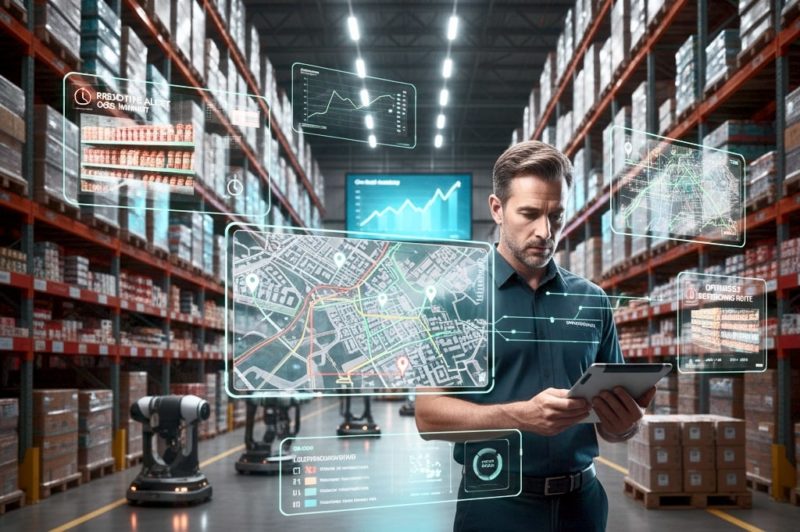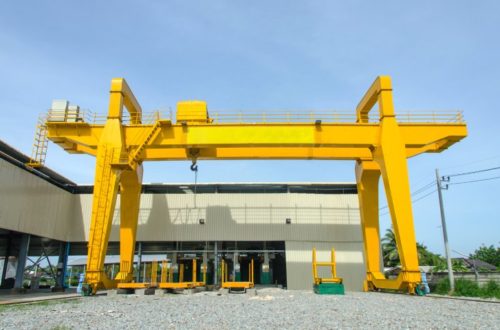Leveraging AI-Powered Image Recognition for Predictive Out-of-Stock Alerts

Let’s talk about the silent killer of sales in the Fast-Moving Consumer Goods (FMCG) industry: the dreaded Out-of-Stock (OOS) situation. When a shopper walks into a store looking for your product and finds an empty gap where it should be, it’s a moment of truth—and often, a moment of failure. Industry reports consistently point to OOS costing brands and retailers up to 4% of their annual revenue, not to mention the irreparable damage to customer satisfaction and loyalty.
For too long, companies have relied on a reactive approach. This meant using field teams to conduct slow, expensive, and often inaccurate manual audits, essentially checking yesterday’s problem. You were always a step behind, patching leaks instead of preventing them. But what if you could see the future of your shelf? That capability is here, delivered by AI-powered Image Recognition (IR). This image recognition FMCG technology provides unprecedented, real-time shelf visibility, turning the shelf into a live data feed.
Our primary focus now must be on how to use this visual data to shift from merely reactive data collection to a proactive, predictive supply chain management system. This is the new competitive imperative for FMCG AI-powered image recognition.
The Transition from Reactive Auditing to Real-Time Visibility
The days of the clipboard-wielding auditor are numbered, and frankly, they needed to be. Conventional auditing methods—whether fully manual or based on small samples—are inherently flawed. They are time-delayed, highly susceptible to human error (or bias), and simply cannot scale to the thousands of outlets an FMCG brand needs to monitor. The data you get is historical, not actionable. This inefficiency is contrasted sharply by the transformative power of AI-powered image recognition. Think of it as installing a tireless, unblinking brain onto every retail shelf you care about.
This IR FMCG system leverages computer vision and machine learning (ML) to automatically analyze images captured by field reps’ smartphones or smart in-store cameras. Within seconds, it can accurately measure On-Shelf Availability (OSA), count product facings, and confirm planogram compliance. This is more than just speed; it’s a shift to a time-saving, real-time, granular data feed. It captures the truth of the retail environment, eliminating guesswork and providing the essential visual intelligence required to sustain an effective route-to-market strategy.
The Mechanics of Predictive Alerting
Simply knowing that a shelf is empty now is still reactive, albeit with a much shorter delay. The true innovation —and the strategic move —is when the system uses that real-time data to predict an OOS event before it happens. How does this magic work? It starts with a continuous stream of visual data—such as the decreasing number of facings for a particular product, which helps estimate the visual depletion rate. This visual evidence is then integrated into sophisticated predictive analytics models.
The model doesn’t just look at the picture; it looks at the picture in the context of the store’s historical sales trends, today’s foot traffic, and the current promotional calendar. By combining these variables, the system calculates the time until stockout for specific SKUs.
The final, critical output isn’t a lengthy report; it’s a prioritized, timely, and proactive alert sent directly to the merchandiser responsible for that area. This allows a field agent to walk into a store already knowing the four most urgent problems they need to fix, fundamentally changing their daily mission from data collector to problem solver.
Strategic Benefits: A Proactive Supply Chain Management Pillar
Moving to this predictive model is not a minor operational tweak; it’s a foundational change that establishes AI-IR as a critical pillar of modern supply chain resilience and proactive management. We’re closing the infamous “last mile visibility gap,” which has long been FMCG distribution’s primary weakness.
By using visual data to foresee problems, companies can move from the costly cycle of cleaning up past failures to systematically preventing future ones. This secures the brand’s market presence and, crucially, improves profitability by maximizing every available retail opportunity. This capability allows manufacturers to exert surgical control over their products’ final resting place before purchase. The discussion now moves beyond just saving a single sale; it’s about systemic financial health driven by an advanced IR solution for FMCG.
Optimizing Inventory and Logistics Based on Visual Demand
The visual demand signals generated by AI-IR are compelling because they are unbiased. Unlike POS data, which only tells you what was bought, a shelf image shows what is available to purchase. This information is vital for superior inventory and logistics decisions.
- Inventory Accuracy: Real-time visual checks identify inventory discrepancies between store systems and actual shelf presence, drastically improving overall data quality.
- Demand Forecasting Precision: Integrating actual shelf-level consumption patterns (visual depletion rate) enhances the accuracy of short-term demand forecasts.
- Logistics Efficiency: Predictive alerts enable optimized restocking routes and delivery schedules, ensuring field teams visit stores based on imminent need rather than fixed, inefficient schedules, thereby reducing costs and waste.
This is how an IR solution for FMCG fundamentally changes the way products flow.
Quantifiable Impact on Sales and Retail Execution
The power of predictive AI-powered image recognition for FMCG solution can be measured not in abstract concepts, but in complex numbers—the measurable business outcomes that directly affect the P&L statement. The most obvious gain is the massive Reduction in Lost Sales because you are actively tackling the OOS problem and ensuring product availability.
The second is the substantial Improvement in Trade Promotion ROI. Promotions are expensive bets. When you spend millions on new displays or a price reduction, you need to ensure the displays are compliant and fully stocked for the entire campaign. AI-IR provides that certainty.
Lastly, it drives significant Enhancement in Merchandiser Productivity. By giving field teams real-time, prioritized action plans based on predictive alerts, you empower them to fix the most critical issues immediately and efficiently cover more outlets.
The Future of Retail: Integrating Visual Data Across the Enterprise
Looking ahead, IR is evolving from a standalone execution tool to a central visual data layer that underpins the entire commercial enterprise. We are effectively creating a ‘Digital Twin’ of the retail shelf, enabling comprehensive scenario analysis and deep competitive insight that was previously impossible. This involves seamlessly integrating visual data streams with major enterprise systems such as Demand Planning (DP), Warehouse Management Systems (WMS), and Customer Relationship Management (CRM).
The goal is to move beyond mere execution fixes and into strategic planning. The visual data layer is strategically crucial for enabling hyper-personalized micro-merchandising strategies, providing competitive shelf-share analysis for market positioning, and facilitating automated contract compliance verification. This high level of integration means the image data informs not just if a product is stocked, but how much to ship and when to ship it, making the flow of goods more innovative and more responsive to genuine consumer behavior.
Conclusion
We have to understand that AI-powered image recognition is much more than a clever auditing tool; it is a profound strategic technological enabler. It has fundamentally enabled FMCG brands to pivot their entire operating model from a costly, crisis-driven, reactive posture to an efficient, proactive, preventive one.
By transforming the opaque retail shelf into a source of intelligent, real-time visual data, companies can foresee and forestall the failures that have historically defined the industry. The strategic benefit is clear: by ensuring consistent on-shelf availability driven by this powerful combination of visual and predictive intelligence, brands don’t just recover lost sales—they cement long-term profitability and build unwavering customer loyalty. The path to market leadership is paved with data, and that data is now visual.
Would you like to receive similar articles by email?





